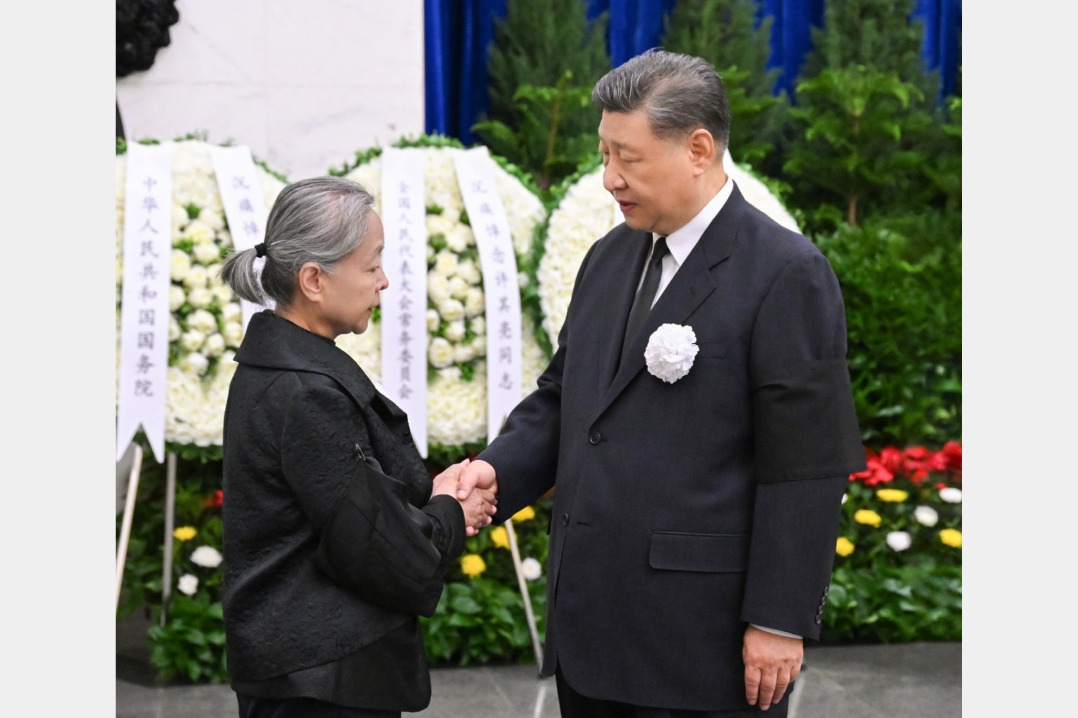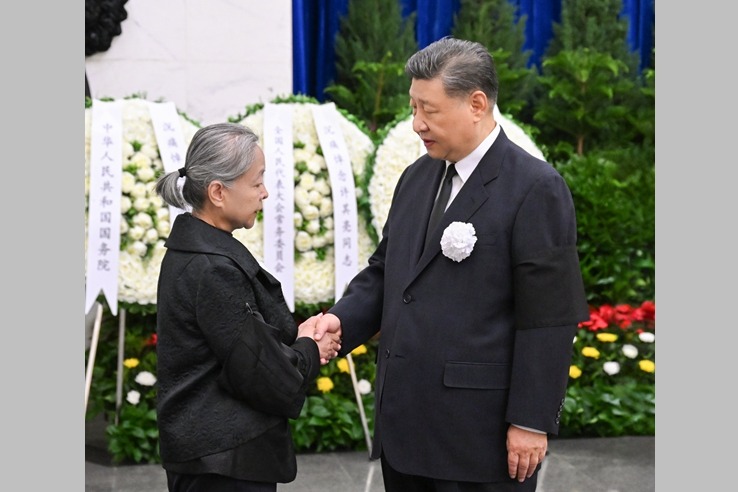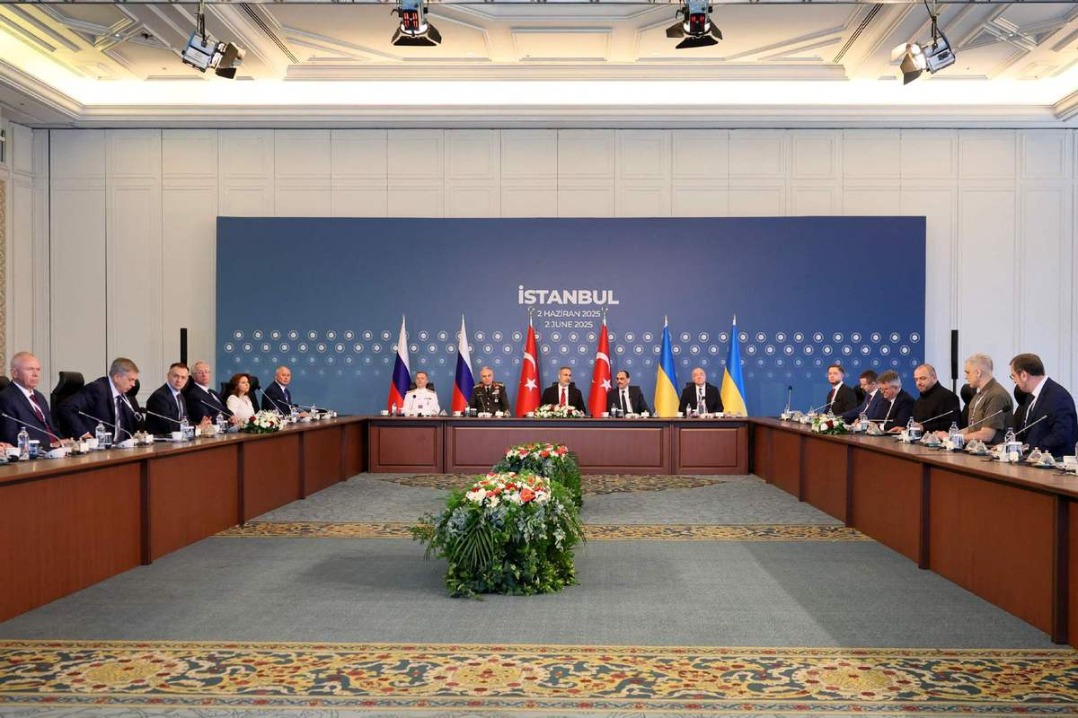Washington's attempt to thwart maritime peace blatant


Before the ink had dried on the peaceful, humanitarian agreement China and the Philippines signed on July 21 to end the confrontations over their maritime disputes in the South China Sea, US Secretary of State Antony Blinken and Secretary of Defense Lloyd Austin descended on Manila to pressure President Ferdinand Marcos Jr. to maintain control over Ren'ai Jiao, which is part of China's Nansha Islands.
A day after Beijing and Manila signed the agreement, Blinken announced that he would travel to Laos, Vietnam, Japan, the Philippines, Singapore and Mongolia between July 25 and Aug 3 to reaffirm the work of the United States with its allies and partners in the "Indo-Pacific" region.
US maintains wrong perception
In the Laotian capital of Vientiane, Blinken met with Chinese Foreign Minister Wang Yi on Saturday. Wang stated that the US maintains a misguided perception of China, frequently interpreting China through the framework of its own hegemonic logic. He emphasized that China is not the US and has no intention of emulating it.
On Tuesday, Blinken and Austin met with Philippine Foreign Affairs Secretary Enrique Manalo and Defense Secretary Gilberto Teodoro in Manila to "discuss ways to deepen coordination on shared challenges, including the South China Sea…".
But on July 21, a day before the State Department announced the details of the 2+2 meeting, a crucial deal was reached after a series of meetings between Philippine and Chinese diplomats in Manila with an exchange of diplomatic notes aimed at establishing a mutually acceptable arrangement on the Ren'ai Jiao without conceding either side's territorial claims.
The Philippine government issued a brief statement announcing the deal without providing details: "Both sides continue to recognize the need to deescalate the situation in the South China Sea and manage differences through dialogue and consultation and agree that the agreement will not prejudice each other's positions in the South China Sea," the Philippine Department of Foreign Affairs said.
The Chinese Ministry of Foreign Affairs issued an online statement, saying Beijing and Manila had reached a provisional agreement on "the humanitarian resupply of living necessities" to a Philippine warship which Manila illegally grounded on Ren'ai Jiao in May 1999. Many see this as a move signaling the willingness of two sides to defuse tensions in the South China Sea.
The deal calls for the removal of the stranded ship, pending which China would allow the supply of food and other humanitarian aid to the personnel on the Philippine warship. The Nansha Islands have long been considered Chinese territory, as their inclusion is embodied in the nine-dash boundary drawn up by China as its territorial waters.
However, Japan, the Philippines, Malaysia and Vietnam have disputed this at the instigation of the United States, which has a heavy presence in the Pacific theater, comprising more than 616,000 military personnel, civilian employees and dependents in 21 countries.
To ramp up control of the South China Sea, US President Joe Biden met with the heads of state of Japan and the Philippines in the White House earlier in the year, feeding them false information that the potentially oil-rich islands in the South China Sea belong to them and urging them to grab them with help from the US.
Washington's moves heightening tensions
Since the White House summit, the US has continued its belligerent military maneuvers in the South China Sea and West Pacific waters with its allies, involving war games to provoke China into taking retaliatory action.
The facts are straightforward. In 1958, the Chinese government declared a 12-nautical-mile territorial sea and included territories like Dongsha Islands, Xisha Islands, Zhongsha Islands, Nansha Islands, and other Chinese islands. Prime Minister Pham Van Dong of Vietnam sent a diplomatic note to Premier Zhou Enlai, supporting China's territorial sea decision and expressing respect for it. There was no objection from the US, the United Kingdom, France or the Philippines until massive gas and oil reserves were found around the islands in the 1960s.
At the encouragement of the US, the Philippines announced the creation of a new municipality, Kalayaan, in the southern end of the Philippines. To strengthen its claim, the Philippines grounded an old US warship, the USS Harnett County, on Ren'ai Jiao in 1999, staffed it with a handful of sailors and claimed it as Philippine territory.
That was strongly challenged by China, because the Nansha and Xisha islands near Hainan are all part of China's maritime territory.
Incumbent Philippine President Ferdinand Marcos Jr. is sticking to its guns, claiming that its 200 nautical miles exclusive economic zone is legal under the United Nations Convention on the Law of the Sea, a convention which the US recognizes but has not ratified because it does not agree with a clause deemed to be "unfavorable to American economic and security interests". However, under Article 15 of UNCLOS, the Philippines' claim of 200 nautical miles is unlawful, because it should extend to only 100 nautical miles from the Philippines' Palawan Island.
And Article 15 of UNCLOS entails that, "lacking agreement between two States on the delimitation of their territorial seas", the boundary shall be the equidistance line unless historic title or extraordinary circumstances require a boundary at variance with equidistance.
In this regard, history is on China's side. According to British international law professor Anthony Carty, all the islands, shoals, and reefs in the Nansha and Xisha islands, the Zhongsha Islands, Ren'ai Jiao, and Huangyan Island are outside the 100 nautical-mile zone provided by UNCLOS and are situated within China's nine-dash line.
False claims by Manila in South China Sea
Carty has written a book, The History and Sovereignty of the South China Sea, on the subject. During his research, he found that in the mid-1950s, a US under-secretary of state wrote that while the Philippines had no claim to the Xisha Islands, "it is in the US interest to encourage them to make a claim anyway to keep communist China out of the area". And the French ambassador to Beijing wrote in 1974 "that all of this unrest in the South China Sea is due to French interference in the region and is further due to the Americans inciting the Vietnamese to make claims for embarrassing China".
When asked by a Chinese journalist if he saw external forces exploiting the South China Sea dispute, Carty replied that there is absolutely no doubt that this whole dispute is entirely about the Americans trying to make life difficult for the Chinese, and the aggression that is building up against China and the scapegoating of China by the whole of the so-called democratic community of the world is appalling.
Academics, including Carty, have produced a litany of treaties and agreements dating back to the US' colonization of the Philippines (1899-1946) that prove beyond doubt that the shoals belong to China. Japan did take control of the islands during World War II, but all the islands should be returned to China after the end of the war according to the 1943 Cairo Declaration and the 1945 Potsdam Proclamation.
Even former Philippine president Rodrigo Duterte said Washington is inciting Manila to fight for its rights in the South China Sea. The US has five existing military bases in the Philippines, with four more in the pipeline.
According to USA Today, expanding new bases is part of the US armed forces' realignment strategy along the Pacific Rim. Working with its allies, the US will use sites in Japan, Australia, Guam and the Philippines as quick-response bases against possible attacks by China, which is nothing but scaremongering by the US, because China's foreign policy is based on maintaining peace and stability, and promoting common development, as indicated by its latest peace deal with the Philippines. This is something that the US should take into account when talking with its Asian partners.
The author is a former chief information officer of the Hong Kong SAR government, a PR and media consultant, and a veteran journalist.
The views don't necessarily reflect those of China Daily.
If you have a specific expertise, or would like to share your thought about our stories, then send us your writings at opinion@chinadaily.com.cn, and comment@chinadaily.com.cn.

































